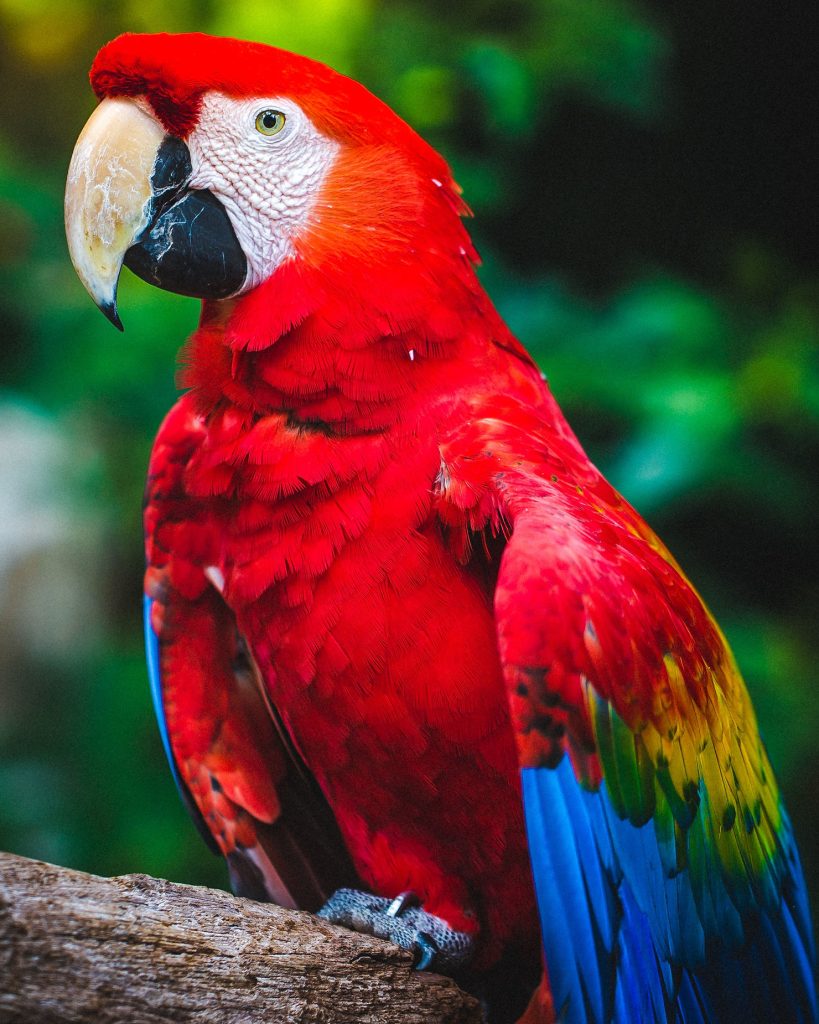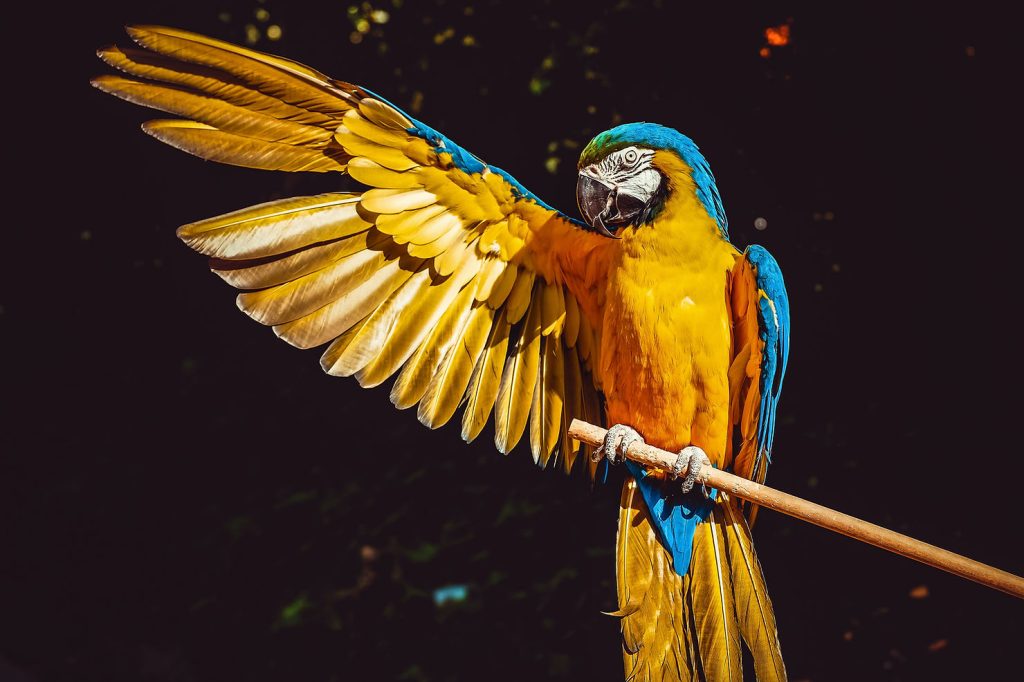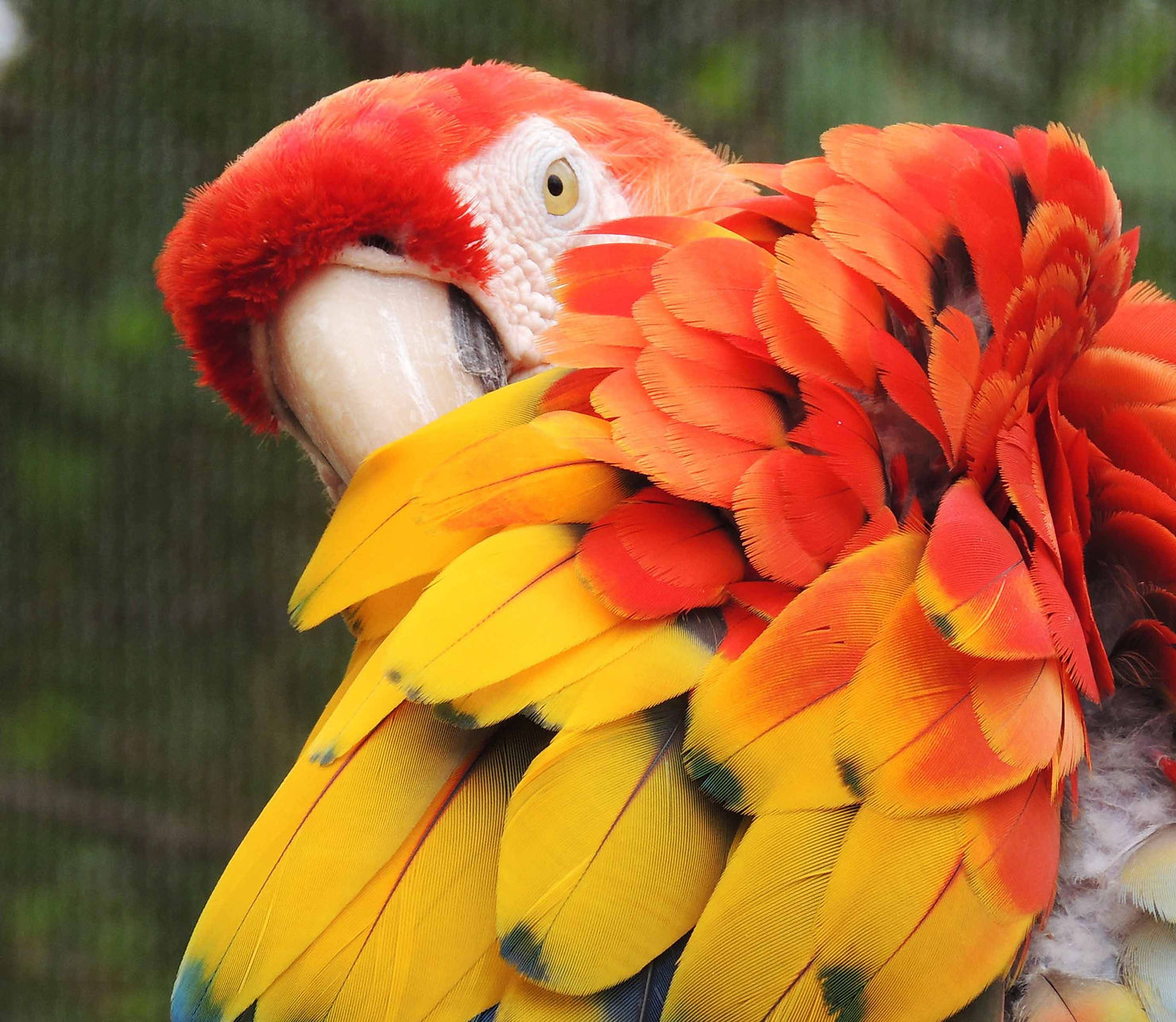An In-Depth Guide to Life with Big Birds—and How to Move Them Across Borders Safely
Introduction: When Your Roommate Has Feathers, a Beak, and an Attitude
Keeping a large parrot in your home isn’t quite like living with a dog or cat. It’s more like living with a hyper-intelligent toddler who has wings, an opinion about everything, and the lung capacity to let the neighborhood know about it.
From macaws and cockatoos to African greys and Amazons, large parrots are among the most captivating—and complicated—pets you can invite into your life.
In this post, we’ll explore what it’s really like to share your home with a large parrot. Whether you’re dreaming of adopting one or just want to understand the world of big bird people, here’s everything you need to know—from the beauty to the bedlam—and how it all ties into global bird transport, bird relocation, and bird import/export USA regulations if you ever need to move your feathered friend internationally.
1. What Counts as a “Large Parrot”?
We’re not talking about budgies or cockatiels here. “Large parrot” generally refers to species like:
- Macaws (Blue-and-gold, Scarlet, Hyacinth)
- Cockatoos (Umbrella, Moluccan, Sulphur-crested)
- African Greys (Congo and Timneh)
- Amazon Parrots (Double Yellow-headed, Blue-fronted)
These birds can weigh anywhere from 400 grams to 1.5 kilograms, have wingspans up to 4 feet, and may live 40 to 80 years in captivity.
Yes, you read that right. Owning a large parrot is often a lifetime commitment—and sometimes longer than your own.
2. Big Brains, Bigger Personalities
Large parrots are often compared to human toddlers in both intelligence and emotional range.
They can:
- Learn hundreds of words
- Mimic voices and household sounds (microwave, phone ringtones)
- Solve puzzles
- Use tools
- Understand abstract concepts
Some birds will even combine words into short phrases, apply them in context, and repeat emotional expressions—like laughing at your missteps or saying “I love you” at bedtime.
Their intelligence is one reason many owners are drawn to them—but it also means they require constant mental stimulation to stay healthy and happy.
3. Noise Levels: This Is Not a Quiet Pet
Let’s address one of the biggest (and most surprising) challenges first: the noise.
- Cockatoos can scream at 135 decibels—louder than a chainsaw.
- Macaws will call across the house… and the block.
- Amazons like to chat and sing, especially when you’re on an important phone call.
This isn’t occasional chirping—it’s part of their natural behavior. For many people in apartments or noise-sensitive neighborhoods, a large parrot may simply not be viable.

4. Emotional Drama, Attachment, and Mood Swings
Parrots form deep emotional bonds with their humans and sometimes become possessive. They might:
- Become jealous of other people or pets
- Scream when you leave the room
- Pout if ignored
- Lash out when hormonal
They also grieve deeply if their favorite person disappears or their environment changes too drastically. This sensitivity makes them emotionally complex companions—rewarding, but also fragile.
5. Beak Strength: Handle With Respect
That beautiful, curved beak? It’s strong enough to crack coconuts, cut through wire, and leave a serious bruise if provoked.
Even friendly parrots might bite out of:
- Fear
- Overstimulation
- Misreading your body language
- Hormonal aggression
Learning “parrot body language” is critical to maintaining a safe and trusting relationship.
6. The Destruction Olympics: Chewing Is a Way of Life
Parrots chew to:
- Explore their environment
- Shape nesting materials
- Soothe themselves
- Alleviate boredom
If not given safe chewing outlets, they’ll turn to:
- Table legs
- Crown molding
- Phone chargers
- Couch cushions
Bird-safe wood toys, rotating perches, foraging boxes, and puzzle feeders are essential to maintaining both sanity and property value.

7. Hygiene: Constant Cleanup Required
Large parrots are messy. They drop food, scatter seed shells, dunk vegetables in water bowls, and defecate frequently. Daily care includes:
- Cleaning cage trays
- Replacing food and water multiple times
- Disinfecting perches
- Sweeping scattered feathers and debris
And when parrots bathe, they don’t gently rinse—they soak everything.
8. Feeding: No, They Don’t Just Eat Seeds
A healthy parrot diet includes:
- Pelleted base
- Fresh fruits and vegetables
- Cooked grains and legumes
- Calcium-rich supplements
- Minimal nuts and seeds
Owners must avoid toxic foods like avocados, onions, chocolate, and caffeine.
Parrots also enjoy eating with their family, so many bond over shared mealtimes.
9. Veterinary Care: Specialized and Expensive
Finding an avian vet is essential. Regular checkups are critical because birds hide illness until it’s severe.
Common health issues include:
- Psittacosis (a zoonotic disease)
- Vitamin A deficiency
- Aspergillosis (fungal infection)
- Behavioral feather plucking
Emergency care can be costly—and travel across state or country borders requires certificates, lab tests, and USDA endorsement, especially for bird import/export USA procedures.
10. The Joy of a Parrot’s Love
Despite all the work, a large parrot can be an unforgettable companion:
- They greet you at the door with a song
- Laugh when you laugh
- Snuggle under your chin (yes, really)
- Ask for kisses and head scratches
- Learn to say “goodnight” before bed
They aren’t just birds. They’re family.

Relocating with a Large Parrot: Bird Transport Without the Stress
If you ever need to move across the country—or across continents—relocating a parrot is more complex than relocating a dog or cat.
Key considerations for bird relocation include:
- Import/export regulations (especially for CITES-listed species)
- Permit acquisition
- Health screenings
- Climate and pressure control during flights
- Noise sensitivity during transitions
Whether you’re managing a bird import USA case from abroad, or planning a bird export USA request for overseas work or family relocation, preparation is key.
Transcontinental Pet Movers: Experts in International Bird Shipping
At Transcontinental Pet Movers, we specialize in international bird transport that is safe, humane, and regulatory-compliant.
We provide:
- Custom enclosures for large parrots
- Temperature and noise-controlled routing
- Assistance with USDA, USFWS, and CITES permits
- Bird export USA consulting for travel out of the country
- Bird import USA compliance services for incoming pets
- Quarantine planning and post-arrival support
- Real-time communication throughout the journey
Whether you’re relocating a blue-and-gold macaw to the UK or bringing an African grey from Singapore, we handle every detail with care.
Final Word: Big Parrot, Big Responsibility
Living with a large parrot is like living with a feathered genius who never leaves your side. It’s rewarding, frustrating, hilarious, and deeply emotional.
If you’re lucky enough to share your life with one of these extraordinary birds, then you already know: no two days are ever the same.
And if you’re preparing to relocate? Let us help you get your parrot there safely—because they’re not cargo. They’re family.
Ready to plan a move with your parrot? Contact us today and let our avian relocation specialists guide you through safe, stress-free international bird transport.

